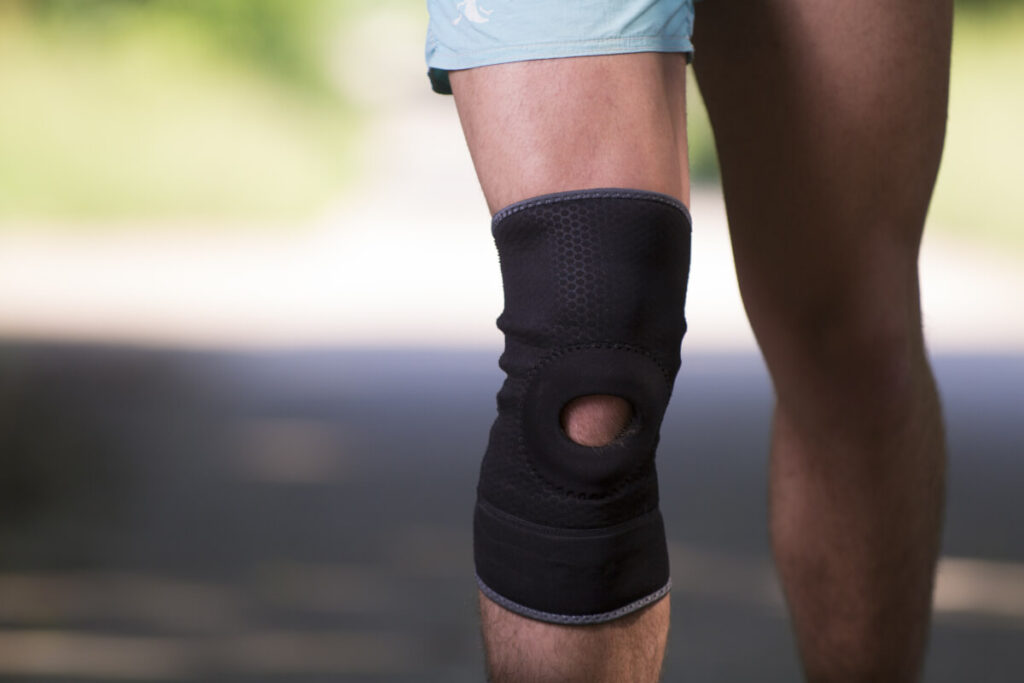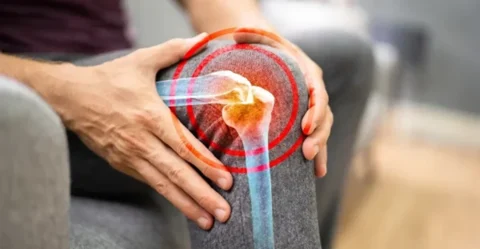Platelet-rich plasma therapy is a promising treatment that can address a wide variety of medical conditions. It’s particularly being used to provide a pain-relieving effect for different musculoskeletal disorders including knee and joint injuries. For patients who are interested in PRP treatment, one common question they may have is about the safety and risks of the injections.
So what are the adverse effects that can be experienced when doing PRP injections into a joint? PRP is safe and there’s very little risk of having major side effects. However, some of the possible but rare complications that may occur are blood clotting, allergic reaction, localized infection, and nerve injury. Meanwhile, common side effects after having the injections include bruising, injection site pain, swelling, bleeding, and joint stiffness, which typically resolve within a few days.
Are There Serious Risks In Getting PRP Injection Treatments For Joint Pain?
One thing that people need to know about platelet-rich plasma injections is that it is an autologous treatment. It means it uses the patient’s own platelet concentrations that are extracted from their blood. The PRP serum basically contains autologous blood growth factors that are already present in the body.
There’s almost zero chance that the PRP injections will be rejected by the body and trigger a serious complication. This is what makes PRP treatments a cut above the other possible regenerative medicine treatments or surgical procedures for chronic joint pain.
However, not all people will respond the same way to the PRP joint injections, as there could still be a small possibility that it can cause unwanted adverse reactions. Here are some of the potential risks from PRP therapy for the knee joint:
1) Allergic reaction
When the body reacts to the foreign component or substance that was injected, an allergic reaction can happen. When this happens, the immune system creates antibodies in an attempt to defend and prevent them from infecting the healthy cells.
While there’s little chance that the body will reject the PRP serum and trigger symptoms of allergic reaction, it can happen due to other factors such as the anesthesia used, the material of the injection instruments, or current medications you’re taking.
To avoid this complication, patients should be open about their medical history and previously known allergies with their provider. The provider should also inform the patient about what type of anesthetic they’ll be using and ask about any prescription medication that they’re taking before the treatment. Patients who are currently taking pain relief medications and NSAIDs for their condition will be asked to stop taking them a few weeks before having PRP.
2) Local infection
PRP is a type of intra-articular injection which means that it’s administered directly into a joint. But while it doesn’t require a large incision, the injections are still somewhat invasive and they’re usually given with ultrasound guidance. For this reason, there’s still a slight risk of developing localized infections at the site of joint injury.
To minimize this risk, practitioners should make sure to administer the PRP procedure in a controlled environment and use only sterilized and medical-grade tools for the injections and preparation of the serum. Patients are also advised to avoid touching, rubbing, or massaging the treated area to prevent infecting the wound.
3) Blood clotting
Most doctors use ultrasound or fluoroscopy to carefully guide the PRP injections to the injured area. However, in the rare instance that the provider has poor injection technique and accidentally hits a blood vessel, it can lead to the formation of blood clots.
It’s important to immediately treat a blood clot to prevent severe joint pain and stop them from progressing to serious vascular conditions like deep vein thrombosis.
4) Nerve injury or damaged tissue
Another possible but uncommon adverse effect is nerve injury or tissue damage. They can occur when the injection was placed improperly or if there is direct trauma to the nerves and surrounding tissues from the needle.
If the nerve is only bruised and not severely cut, it can still be able to regenerate and recover on its own in a few weeks. But if a patient experiences symptoms like persistent numbness, muscle weakness, or sharp pain, they should immediately seek medical treatment.
5) No changes or improvement in symptoms
Although it’s not technically a risk, seeing no improvements or changes in the joint injury is still an unwanted effect from the PRP injections. This can be due to the low concentration of platelets and growth factors in the patient’s own blood.
In some cases, there are patients who experience worsening joint pain after the treatment. When this happens, it’s best to consult with your doctor and explore other possible treatment options.
Common Side Effects Of Injecting PRP To The Joint

The more common side effects of PRP treatments for joint pain can be associated with the administration of the injection itself. Since most injections use small needles, there’s still a risk for minor trauma to the skin tissues which can lead to temporary side effects like bruising, injection site pain, bleeding, and swelling.
1) Post injection flare
This side effect refers to the feeling of increased pain or soreness in the treated joint right after the PRP injections. This discomfort isn’t a serious concern and it usually goes away within a week or 2 from the procedure. Most of the time, the post injection flare happens as a reaction of the body to the needles or the serum that was injected.
2) Stiffness
Some PRP-treated patients report having joint stiffness after their procedures. This can be due to the initial inflammatory response from the injections of platelet-rich plasma. The inflammation, however, is necessary to activate the healing process that leads to new cell growth and tissue regeneration in the treated joints.
3) Bleeding
It’s also normal to have some light bleeding after the intra-articular injections of PRP. This may happen since the needles pierce the skin and cause trauma to the tissues at the time of injection. This can be remedied by applying pressure to the wound until the bleeding stops.
The provider can also cover the treated site with a bandage to manage the bleeding and protect the wound from possible infections.
4) Swelling
Patients may also experience post-procedure swelling from PRP treatments. As the PRP injection starts to take effect, the body undergoes an inflammatory reaction that will trigger the tissue healing in the damaged joints. When patients experience swelling, it’s usually a good sign – the PRP injection is working.
This side effect can last for a few days after the treatment and will naturally resolve on its own. If it causes persistent discomfort, you may apply an ice pack to the injured area to manage the inflammation.
5) Bruising or skin discoloration
It’s also quite common for patients to notice the skin around the treated area to appear bruised or discolored after the injections. This can happen when blood vessels near the skin surface become injured or damaged due to the penetration of the needles. Most bruises will lighten and completely disappear within 7 to 10 days from the procedure.
PRP: Benefits for Joint Pain and Overview of the Injection Procedure
Many orthopedic surgeons and doctors in the field of sports medicine have been using autologous platelet-rich plasma injections due to its numerous healing factors and excellent ability of cartilage repair and correction of damaged tissue, ligaments, and muscles. Some of the known benefits of PRP injection in treatment of joints are:
- Eliminates surgical risks and complications
- Provides lasting pain relief and improvement in symptomatic knee osteoarthritis
- Reduces the recurrence of re-injury or damage to the joints
- Improves range of motion and joint function in patients with chronic pains
- Boosts healing and speeds up recovery time after surgery for knee pain and injuries
- Treats common conditions like torn cartilage, muscle strains, hip arthritis, ligament and tendon sprains effectively
- Treats joint pain more safely compared to cortisone injection
The procedure for PRP is pretty straightforward and because it is non-surgical, it is considered an outpatient treatment. Here’s an overview of how the PRP injections for joints are usually done:
- The treatment session begins with the extraction of a blood sample from the patient. The provider will normally draw the blood from the arm.
- The next step is to prepare the serum, which is commonly done by placing the blood product in a centrifuge machine. In this process, the sample is spun at high speeds to completely isolate the platelets from the red blood cells and white blood cells. It’s important to get a high concentration of platelets since this type of blood cell plays a vital role in healing of joint injuries.
- After centrifugation, they will prepare the PRP solution for joint injections.
- PRP is then injected with the help of ultrasound imaging to make sure they are accurately placed in the injured area. The number of injections that will be placed will depend on the type of condition being treated. Normally, it can take 2 to 3 injections for knee arthritis and about 1 to 2 injections for the tendons.
- From the blood extraction, centrifugation, and injections, patients can expect that the whole procedure can take anywhere from 45 minutes to an hour.
Important Reminders Before and After PRP Injections

To assure the safety and success of the PRP injections, there are several reminders before patients go in for their treatment. Here are some of the things that patients need to do prior their PRP procedure:
- For at least 4 weeks before the treatment, stop taking corticosteroid injections or steroid injections
- Discontinue the use of anti-inflammatory medications and blood thinners for at least a week prior to the procedure
- To make the blood extraction easier, patients should be well-hydrated before going in for the PRP treatment
After the injections, patients can go home on the same day and return to their normal activities. However, they are advised to take it easy since they may experience post injection flare and other side effects. To have a smooth recovery from PRP injections, here are some important aftercare instructions:
- Avoid engaging in strenuous activities or physical exercise for the first few days after injections
- Don’t take anti-inflammatory medications and instead use a cold compress or ice pack to manage swelling and pain from the procedure
- Avoid drinking alcohol and caffeine after the treatment
- Wear a knee brace to protect the treated joint or use crutches when walking to minimize the discomfort especially if the provider recommends it
Buy Affordable, High-Quality Medical Tools For PRP Treatments At FACE Med Store
Even though platelet-rich plasma therapy has a high clinical efficacy and safety rating for joint pain treatment, it’s still important that patients know about the potential risks and side effects so they can make an informed decision about getting the procedure. Fortunately, PRP injections have very few side effects, and most of which are manageable and can be remedied at home.
At FACE Med Store, we’re dedicated to supporting medical clinics and practices by helping them stock up on high-quality equipment and supplies for their treatments. We offer our items at competitive prices. In addition to medical supplies, we also offer devices and products like PEP Factor for cosmetic procedures. Feel free to contact us to inquire about our stocks or learn more about how we can help your business.






